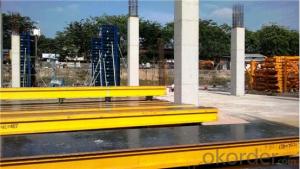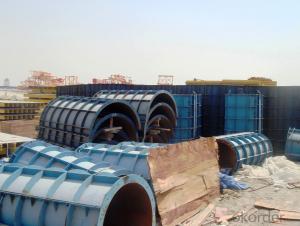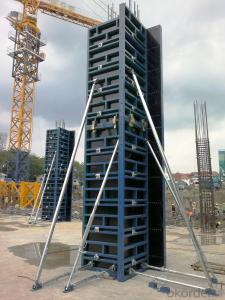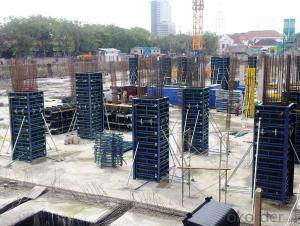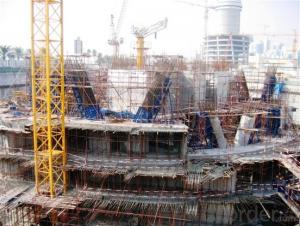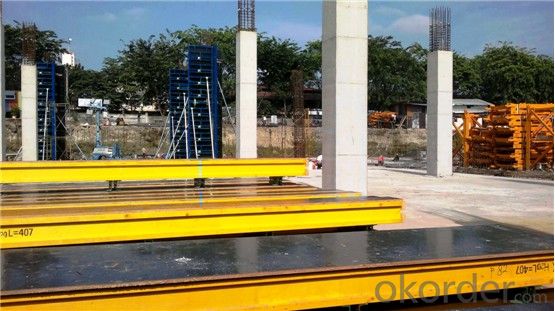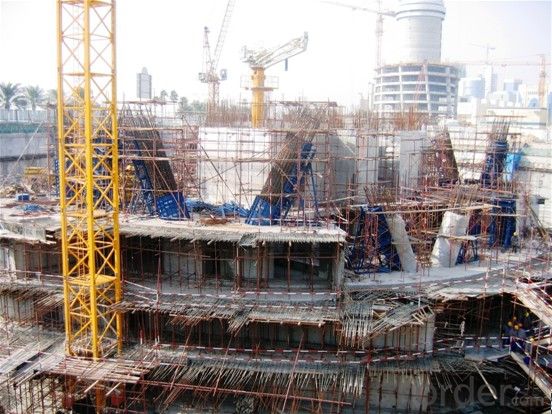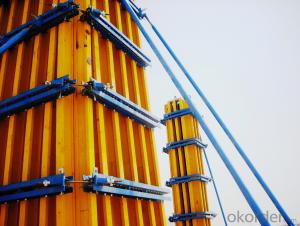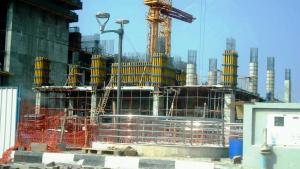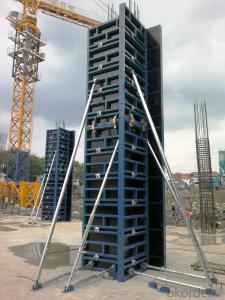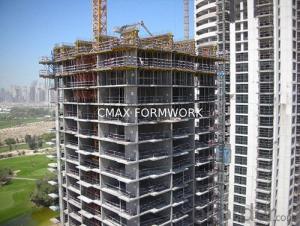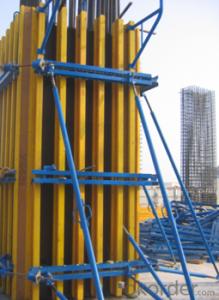Adjustable H20 Timber Beam Formwork for Slant Concrete Column Formwork
- Loading Port:
- Tianjin
- Payment Terms:
- TT or LC
- Min Order Qty:
- 50 kg
- Supply Capability:
- 1000 kg/month
OKorder Service Pledge
OKorder Financial Service
You Might Also Like
1. Structure of Steel Column Formwork
SC system is a kind of formwork for pouring circular column; it is composed of two pieces of steel formwork, props, connectors, etc.
2. Main Features of Steel Column Formwork
1. No assembling for formwork, easy operation with formed formwork.
2. High stiffness guarantees perfect concrete shape;
3. The formwork can be moving as a whole unit, fast and repeatedly turnover is available.
3. Steel Column Formwork Images
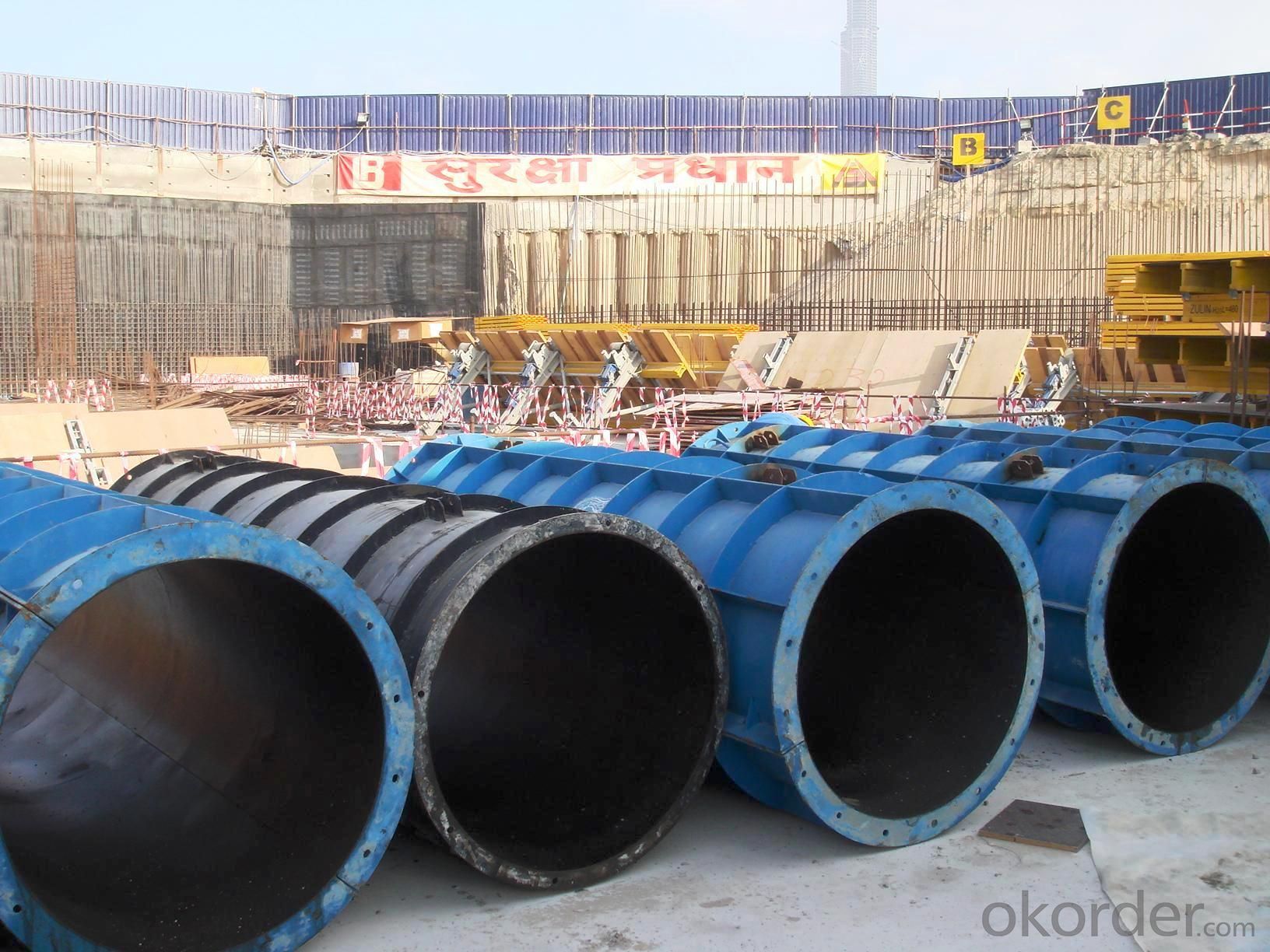
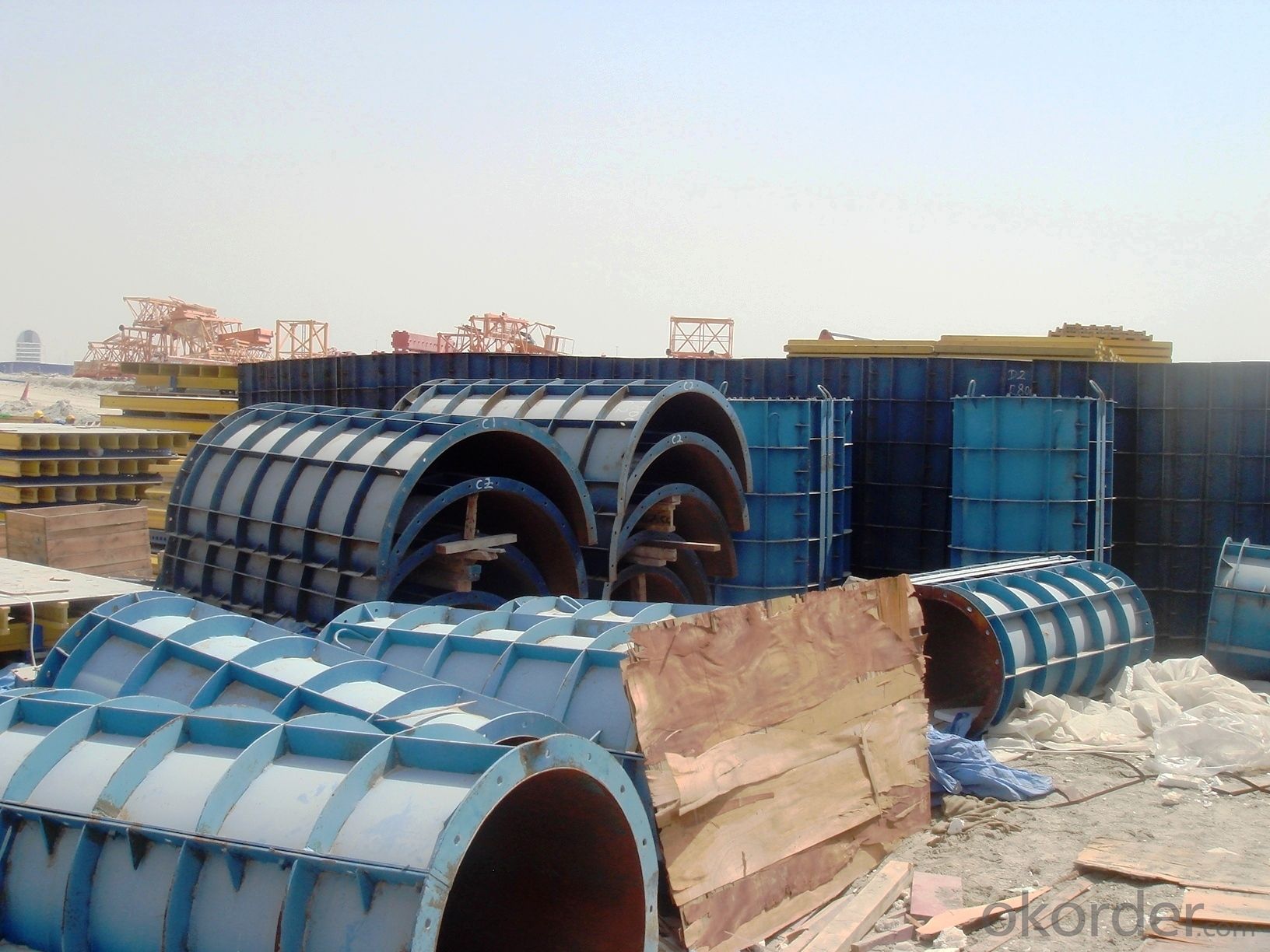
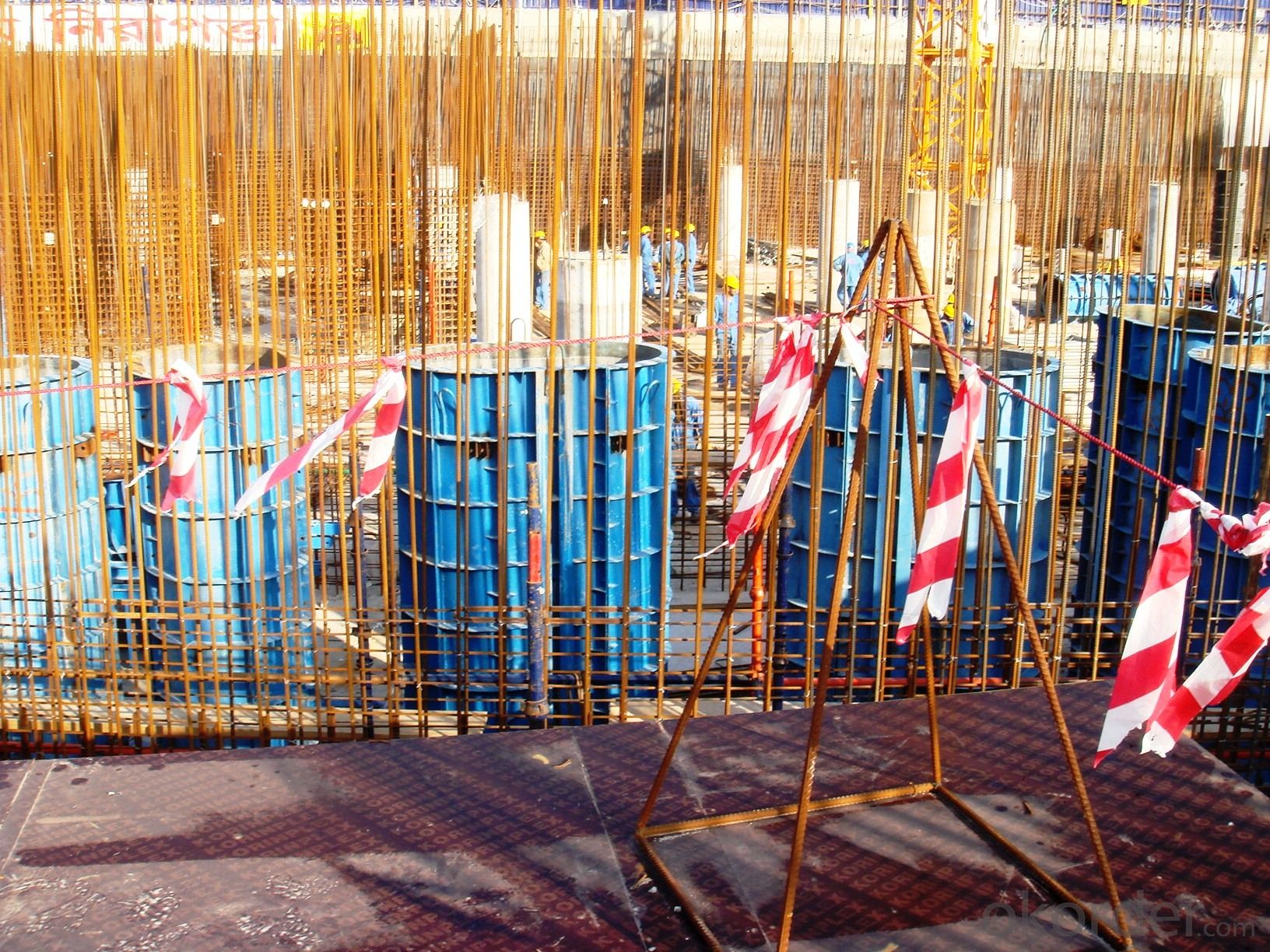

4. STEEL Column Formwork Specification
-As a standardized system, it is flexible to assemble , wood batten can be filled to satisfy the need f of non-standard size.
-The adjustable steel clamp is convenient to use, and can hold tightly.
-There is a prizing part designed in the corner, which can help to position and remove formwork easily.
-The formwork series are a complete system with a full set of accessories, and can be set up flexibly according to project demand.
5. FAQ of Steel Column Formwork
1) What can we do for you?
.We can ensure the quality of the vinyl banner and avoid extra expenses for customers.
.We can provide you the professional design team.
.We can provide fashionable and newest styles for you.
.We can design the artwork for you.
. Please feel free to customize.
2) What promises can be done by us?
. If interested in Steel Column Formwork, please feel free to write us for any QUOTE.
. If printing required, please advise asap because the whole set need much more time to complete.
. Please DO check goods when courier knocks your door and contact us asap if any issue.
3) What about of our after-sale service?
. Response will be carried out in 24hours after receiving any complain or request.
. Aluminum-Frame Formwork cost can be refund after order is confirmed.
. If the products are not based on the requirements, there will be the relevant compensations made for you.
- Q: How does steel formwork impact the overall cost of a construction project?
- Steel formwork can have a significant impact on the overall cost of a construction project. While steel formwork may have a higher initial cost compared to traditional timber formwork, it offers several advantages that can result in cost savings in the long run. Firstly, steel formwork is more durable and has a longer lifespan than timber formwork. It can withstand multiple uses without significant wear and tear, reducing the need for frequent replacements. This longevity of steel formwork eliminates the costs associated with purchasing new formwork materials for each construction project, resulting in long-term savings. Moreover, steel formwork provides superior strength and stability, allowing for larger and more complex construction designs. This enhanced structural integrity can reduce the need for additional support systems, such as props or scaffolding, which can add to the overall costs of a project. Additionally, steel formwork can be easily customized to fit different shapes and sizes, minimizing wastage and optimizing material usage. Furthermore, steel formwork offers faster assembly and dismantling times compared to timber formwork. The modular nature of steel formwork allows for easy installation and removal, reducing labor costs and increasing productivity. The shorter construction cycle facilitated by steel formwork can lead to significant time savings, enabling early project completion and reducing financing costs. Another cost-saving aspect of steel formwork is its reusability. Steel formwork can be dismantled, cleaned, and reused in subsequent projects, minimizing the need for new formwork materials. This not only reduces the material procurement costs but also decreases waste generation and environmental impact. However, it is important to note that the cost impact of steel formwork will vary depending on the specific project requirements and regional factors such as material availability and labor costs. Therefore, a detailed cost analysis considering all these factors is crucial in determining the overall cost-effectiveness of steel formwork for a construction project.
- Q: How does steel formwork contribute to the strength of the structure?
- Steel formwork contributes to the strength of a structure in several ways. Firstly, steel is a strong and durable material, making it ideal for withstanding the pressures and loads that a structure may experience. This strength allows the formwork to support the weight of the concrete during the pouring and setting process, ensuring that it does not collapse or deform under the weight. Additionally, steel formwork provides excellent stability and support, which is crucial for the overall stability of the structure. The rigidity of steel formwork prevents any shifting or movement during the curing process, ensuring that the concrete sets in the desired shape and maintains its structural integrity. Moreover, steel formwork is highly resistant to moisture, chemicals, and extreme weather conditions. This resistance helps to protect the concrete from any potential damage or deterioration that may occur over time, ensuring the longevity and strength of the structure. Another essential aspect of steel formwork is its ability to create smooth and precise concrete surfaces. The use of steel panels and beams with smooth finishes allows for a high level of accuracy and precision in the construction process. This precision translates into a more robust and structurally sound finished product. Furthermore, steel formwork is reusable, which contributes to its cost-effectiveness and sustainability. The ability to reuse the formwork multiple times reduces construction costs and minimizes waste, making it an environmentally friendly option. In summary, steel formwork plays a crucial role in enhancing the strength of a structure. Its strength, stability, resistance to various elements, precision, and reusability all contribute to creating a durable and robust structure that can withstand the test of time.
- Q: How does steel formwork contribute to the safety of construction workers?
- Steel formwork contributes to the safety of construction workers in several ways. Firstly, steel formwork is known for its durability and strength, which provides a stable and secure working platform for construction workers. This stability minimizes the risk of accidents or injuries caused by unstable or collapsing structures. Additionally, steel formwork is designed to be fire-resistant, offering an added layer of protection in case of fire hazards on construction sites. This not only safeguards the workers but also helps to prevent the spread of fire to neighboring structures. Furthermore, steel formwork is often prefabricated and can be easily assembled and disassembled, reducing the time workers spend on-site and minimizing their exposure to potential hazards. The ease of assembly also ensures that the formwork is properly installed, eliminating the risk of weak or faulty structures that could pose a threat to workers. Moreover, steel formwork is designed with safety features such as handrails, guardrails, and non-slip surfaces. These features provide additional protection to workers, preventing falls and accidents while working at heights or on elevated platforms. Lastly, steel formwork is designed to withstand external forces such as wind, earthquakes, or heavy loads, making it more resistant to structural failures. This resilience reduces the risk of accidents and injuries caused by structural collapses, providing a safer working environment for construction workers. In summary, steel formwork contributes significantly to the safety of construction workers by offering stability, fire resistance, ease of assembly, safety features, and resilience to external forces. These features ensure that workers can carry out their tasks in a secure environment, minimizing the risks associated with construction activities.
- Q: Can steel formwork be used in cold weather conditions?
- Yes, steel formwork can be used in cold weather conditions. Steel is a durable and strong material that can withstand extreme temperatures. However, it is important to consider the potential effects of cold weather on the construction process and the performance of the formwork. In cold weather, the most significant concern is the possibility of freezing temperatures affecting the setting and curing of the concrete. This can cause delays in the construction schedule and affect the quality of the concrete. To address this issue, several measures can be taken when using steel formwork in cold weather conditions. Firstly, it is important to ensure that the formwork is properly insulated to prevent heat loss and maintain the required temperature for the concrete. This can be achieved by using insulating materials such as polystyrene or foam boards around the formwork. Secondly, heating devices such as electric blankets or heat lamps can be used to maintain the desired temperature during the curing process. These devices should be placed strategically to provide uniform heat distribution without damaging the steel formwork. Additionally, it is crucial to plan the construction schedule carefully, taking into account the weather forecast and avoiding pouring concrete during extremely cold periods. Cold weather concreting techniques, such as using accelerators or special admixtures, can also help to increase the rate of concrete setting and prevent freezing. Overall, while steel formwork can be used in cold weather conditions, proper precautions must be taken to ensure the successful completion of the construction project. Adequate insulation, heating devices, and careful scheduling are essential to mitigate the potential challenges posed by cold weather on the performance of the formwork and the quality of the concrete.
- Q: Can steel formwork be used for energy-efficient concrete buildings?
- Yes, steel formwork can be used for energy-efficient concrete buildings. Steel formwork provides excellent strength and durability, allowing for the construction of complex concrete structures with high thermal performance. Additionally, steel formwork can be easily reused multiple times, reducing waste and promoting sustainability in the construction industry.
- Q: How is steel formwork removed after concrete has cured?
- Steel formwork is typically removed after the concrete has cured by following a systematic process. Firstly, any props or supports that were used during the pouring and curing of the concrete are removed. These supports are usually adjustable and can be easily disassembled. Next, the formwork panels are carefully inspected to ensure that the concrete has fully cured and is ready for removal. Once this is confirmed, the formwork panels are detached from each other starting from the top and working downwards. To remove the formwork, the connections between the panels are usually released using specialized tools such as formwork wedges or clamps. These connections are typically designed to be easily disassembled, allowing for efficient removal. After disconnecting the panels, they are lifted away from the cured concrete. This process is often done using cranes, forklifts, or other lifting equipment, depending on the size and weight of the formwork panels. Care must be taken during the removal process to avoid any damage to the concrete structure. The formwork panels are carefully lifted, ensuring that they do not scrape or impact the concrete surface. Additionally, any residue or debris that may have accumulated on the formwork panels during the curing process should be removed before lifting them away. Once the steel formwork has been completely removed, it can be stored for future use or dismantled for recycling. Proper storage and maintenance of formwork are crucial to ensure its longevity and cost-effectiveness for future construction projects. In conclusion, the removal of steel formwork after concrete has cured requires a systematic approach that involves the careful disassembly and lifting of the formwork panels. Following these steps ensures the integrity of the concrete structure while allowing for the reuse or recycling of the formwork.
- Q: Can steel formwork be used for underground culverts?
- Yes, steel formwork can be used for underground culverts. Steel formwork is known for its durability, strength, and ability to withstand heavy loads and pressure. This makes it suitable for constructing underground culverts, which are designed to carry water, sewage, or other fluids below the ground surface. Steel formwork provides a rigid structure that can withstand the weight of the soil and any traffic loads above it, ensuring the stability and longevity of the culvert. Additionally, steel formwork is versatile and can be easily customized to accommodate different sizes and shapes of culverts. Overall, steel formwork is a reliable and efficient choice for constructing underground culverts.
- Q: What are the different sizes and dimensions of steel formwork?
- The sizes and dimensions of steel formwork can vary depending on the specific requirements of the construction project. However, common sizes range from 1.2 meters to 2.4 meters in width and 2.4 meters to 4.8 meters in length. The thickness of the steel sheets used for formwork can also vary, typically ranging from 3mm to 6mm.
- Q: Can steel formwork be used for both single-use and multi-use applications?
- The utilization of steel formwork can cater to both single-use and multi-use purposes. The decision between these two options heavily relies on the particular demands of the construction project and the allocated budget for formwork. When it comes to single-use applications, steel formwork can be easily customized and manufactured to fit the specific dimensions and shapes necessary for the concrete structure. Once the concrete has solidified, the formwork can be taken off and discarded. This proves to be a cost-effective approach for projects that do not require the formwork for future use. On the flip side, steel formwork can also be designed and produced for multi-use purposes. In this scenario, the formwork is constructed to be sturdy and capable of being reused in multiple construction projects. Steel formwork boasts a longer lifespan compared to materials like timber, making it suitable for repeated use. Moreover, steel formwork can be effortlessly adjusted and reconfigured to accommodate various shapes and sizes, further enhancing its versatility. Nevertheless, it is crucial to note that proper maintenance and care are necessary to ensure the longevity and structural integrity of multi-use steel formwork. Regular inspection, cleaning, and repair of the formwork are essential to prevent any potential issues that may arise from repeated use. To summarize, steel formwork can be employed for both single-use and multi-use purposes, depending on the specific requirements and budget of the construction project. While single-use formwork offers a cost-effective solution, multi-use formwork provides durability and versatility for repeated use.
- Q: What are the different types of accessories used in steel formwork installation?
- The successful construction process relies on various accessories utilized in steel formwork installation, each serving a distinct purpose. Some commonly used accessories include the following: 1. Wedges: These secure the formwork panels and provide stability during concrete pouring. By inserting wedges between panels and tightening them, the panels remain firmly in place. 2. Ties: Essential for connecting formwork panels and maintaining desired structure shape, ties, typically made of steel, prevent bulging or shifting during pouring. 3. Formwork clamps: These join formwork components, ensuring a secure attachment. Designed to withstand concrete pressure, they keep the formwork system intact. 4. Braces: Providing additional support and stability, braces evenly distribute the load, preventing panel bending or collapse under concrete weight. 5. Scaffolding: Often used alongside steel formwork installation, scaffolding offers a safe working platform for construction tasks at higher areas of the structure. 6. Corner fillets: To create rounded corners, corner fillets guarantee a smooth finish and eliminate sharp edges. Made of flexible materials like rubber or PVC, they are easy to install and remove. 7. Formwork release agents: These agents prevent concrete adhesion to formwork surfaces by creating a thin barrier. Once the concrete has cured, the formwork can be easily removed. 8. Formwork spacers: Spacers maintain a consistent gap between formwork and reinforcement bars, ensuring proper concrete cover. They prevent corrosion and enhance structural integrity. 9. Lifting accessories: Lifting eyes or hooks safely lift and move formwork panels into position, providing a secure attachment point for cranes or lifting equipment. These examples demonstrate the various accessories employed in steel formwork installation. Each accessory is crucial for a sturdy and secure formwork system capable of withstanding concrete pressures. Choosing the appropriate accessories is essential based on the specific requirements of the construction project.
Send your message to us
Adjustable H20 Timber Beam Formwork for Slant Concrete Column Formwork
- Loading Port:
- Tianjin
- Payment Terms:
- TT or LC
- Min Order Qty:
- 50 kg
- Supply Capability:
- 1000 kg/month
OKorder Service Pledge
OKorder Financial Service
Similar products
Hot products
Hot Searches
Related keywords
